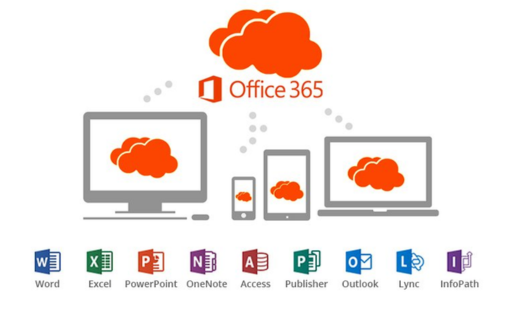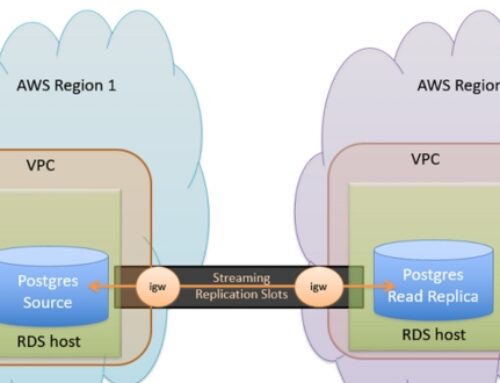Understanding Microsoft 365
Overview of Microsoft 365:
- Microsoft 365 as a Cloud-Based Suite:
Definition: Formerly known as Office 365, Microsoft 365 is a comprehensive, cloud-based suite.
Components: It integrates a range of productivity applications (Word, Excel, PowerPoint, Outlook) and collaboration tools.
Cloud Services: Microsoft 365 goes beyond traditional office applications by offering cloud services like OneDrive, SharePoint, Teams, and more.
Integration: The suite is designed to provide a cohesive and integrated environment for users to perform various tasks.
- In-Depth Look at Components:
Productivity Applications: Microsoft 365 includes familiar applications such as Word for word processing, Excel for spreadsheets, PowerPoint for presentations, and Outlook for email and communication.
Collaboration Tools: It provides collaboration tools like Teams, fostering real-time communication and collaboration among team members.
Cloud Services: OneDrive enables cloud storage, SharePoint facilitates team collaboration and document sharing, creating a centralized platform for information and workflow management.
- Streamlining Workflows:
Integration of Services: Microsoft 365 components work together seamlessly, streamlining workflows by allowing users to transition between applications and services effortlessly.
Workflow Enhancement: Users can create, share, and edit documents in real-time, enhancing productivity and efficiency.
Communication and Collaboration: Teams within an organization can collaborate in real time, improving overall workflow dynamics.
Benefits of Microsoft 365:
Flexibility and Accessibility:
Work Anywhere: With the cloud-based nature of Microsoft 365, users can work from anywhere with an internet connection.
Device Independence: Accessibility is not limited to a specific device, promoting flexibility in how and where work is done.
Enhanced Security:
Security Features: Microsoft 365 incorporates robust security features, safeguarding data and communication.
Compliance: It often complies with industry standards and regulations, ensuring that sensitive information is handled securely.
Automatic Updates:
Continuous Improvement: Microsoft 365 provides automatic updates for its applications and services, ensuring users always have access to the latest features and security patches.
Reduced Maintenance: Users don’t need to manually update software, reducing the burden on IT departments.
Collaboration and Communication:
Real-time Collaboration: Teams and other collaboration tools enable real-time communication and collaboration, fostering a more dynamic work environment.
Efficient Information Sharing: Services like SharePoint and OneDrive facilitate efficient sharing and management of documents and information among team members.
Microsoft 365 offers a comprehensive and integrated solution that not only includes traditional productivity applications but also leverages cloud services to enhance collaboration, flexibility, and security in the modern workplace.
Creating Dynamic Documents with Word, Excel, and PowerPoint
Word Mastery
In this section, participants will advance their skills in Microsoft Word, moving beyond basic document creation. The focus is on collaboration tools, allowing users to work together on a document simultaneously. Co-authoring enables multiple users to edit a document in real-time, fostering efficient teamwork. Version control ensures that changes are tracked, allowing users to revert to previous versions if needed. The power of templates is explored, streamlining the document creation process and ensuring consistency in formatting.
Integration with other Microsoft 365 applications is highlighted, demonstrating how Word seamlessly interacts with tools like Excel and PowerPoint. This integration enhances the overall workflow, enabling users to incorporate data, charts, and presentations directly into their Word documents.
Excel for Data Analysis and Visualization
This section delves deep into Microsoft Excel’s capabilities for data analysis and visualization. Participants will learn to go beyond basic spreadsheet functions, exploring advanced features like formulas, pivot tables, and charts. Formulas allow for complex calculations, pivot tables enable dynamic data summarization, and charts transform raw data into visually engaging insights.
The integration with Power BI is emphasized, showcasing how Excel can be used in tandem with Power BI for enhanced data analytics. Power BI provides advanced visualization and business intelligence capabilities, taking Excel’s analytical power to the next level.
Elevating Presentations with PowerPoint
The focus here is on mastering the art of creating impactful presentations using Microsoft PowerPoint. Participants will explore design features to create visually appealing slides and learn about collaboration options for seamless teamwork on presentations. The integration with Microsoft 365 enables cloud-based presentations, allowing for easy sharing and collaboration from anywhere.
Tips for delivering engaging presentations, both in-person and virtually, are provided. This includes techniques for capturing and maintaining audience attention, utilizing multimedia elements effectively, and adapting to different presentation environments.
This training module aims to empower users with advanced skills in Microsoft Word, Excel, and PowerPoint, enabling them to create dynamic documents, conduct sophisticated data analysis, and deliver compelling presentations.
Efficient Data Management with OneDrive and SharePoint
OneDrive: Your Cloud Storage
In the realm of efficient data management, OneDrive emerges as a cornerstone for secure and accessible cloud storage. OneDrive provides users with a personal cloud storage solution that extends the convenience of accessing files from virtually anywhere with an internet connection. A key advantage lies in its robust file versioning capabilities, allowing users to track changes and revert to previous iterations as needed. This feature not only ensures data integrity but also provides a safety net against inadvertent changes or deletions
Sharing options in OneDrive further amplify its collaborative potential. Users can seamlessly share files and folders with colleagues or external partners, controlling access levels to maintain confidentiality. The integration of OneDrive with other Microsoft 365 applications is a noteworthy aspect, facilitating a cohesive digital ecosystem. This synergy enhances productivity by enabling users to transition seamlessly between different tools, such as Word, Excel, and PowerPoint.
Collaborative Workspaces with SharePoint
Enter the collaborative domain with SharePoint, a dynamic platform designed to foster teamwork and information sharing within organizations. SharePoint’s prowess lies in creating collaborative intranet sites that serve as centralized hubs for collective efforts. By exploring document libraries, users can efficiently organize and manage files, ensuring a structured and easily navigable repository.
SharePoint extends beyond mere file storage, incorporating lists and integration with Microsoft Teams. Lists provide a versatile means of organizing and tracking information, from project tasks to inventory. The integration with Microsoft Teams, a popular communication and collaboration tool, further amplifies SharePoint’s impact by seamlessly blending document management with real-time communication.
SharePoint serves as a comprehensive solution for organizations seeking a collaborative workspace that goes beyond conventional file storage. Its features empower teams to work cohesively, fostering an environment where information flows seamlessly, leading to enhanced productivity and streamlined collaboration. The integration of SharePoint into an organization’s workflow can fundamentally transform the way teams operate and share knowledge, making it a cornerstone of modern collaborative workspaces.
Power Automate: Streamlining Processes
Introduction to Power Automate:
Power Automate is a cloud-based service from Microsoft that allows you to create automated workflows between your favorite apps and services to synchronize files, get notifications, collect data, and much more.
Key Features:
- Automation of Repetitive Tasks:
- Power Automate enables users to automate routine and time-consuming tasks, reducing manual efforts.
- Workflows can be triggered by various events, such as the creation of a new file, the receipt of an email, or changes in a database.
- Integration with Microsoft 365 Applications:
- Seamless integration with Microsoft 365 applications like Outlook, SharePoint, Excel, and Teams.
- Create workflows that connect these applications, facilitating the flow of data and actions between them.
- Enhanced Efficiency:
- Improve efficiency by automating complex processes, ensuring accuracy and consistency in task execution.
- Reduce the risk of errors associated with manual intervention.
- User-Friendly Interface:
Power Automate provides a user-friendly interface with a range of pre-built templates for common tasks, making it accessible even to users with limited coding experience.
Use Cases:
Automated Approval Workflows:
Set up workflows for document approvals, where notifications are sent to relevant parties, and approvals are logged automatically.
Data Synchronization:
Automatically synchronize data between different applications to ensure consistency across platforms
Notification Systems:
Set up automated notifications based on specific triggers, such as the creation of a new task or the receipt of an important email.
Power Apps for Custom Solutions

Introduction to Power Apps:
Power Apps is a suite of apps, connectors, and a data platform that enables users to create custom apps for their business needs without the need for extensive coding skills.
Key Features:
Low-Code Development:
Power Apps follows a low-code approach, allowing users to build apps with minimal coding knowledge.
Drag-and-drop functionality and pre-built templates make it easy to design custom applications.
Integration with Data Sources:
Connect Power Apps to various data sources, including SharePoint, Excel, SQL Server, and more.
Retrieve and manipulate data seamlessly within the app.
Customization for Business Processes:
Tailor Power Apps to meet specific business requirements, streamlining processes that might be unique to your organization.
Create forms, workflows, and dashboards that align with your business needs.
Cross-Platform Compatibility:
Power Apps supports the creation of apps that work on multiple platforms, including web browsers, mobile devices, and tablets.
Use Cases:
Customized Data Entry Apps:
Design apps for data entry, allowing users to input and manage information specific to their roles and responsibilities.
Workflow Management Apps:
Build apps to track and manage workflows, providing a centralized platform for monitoring progress and taking action.
Event Registration Apps:
Create apps for managing event registrations, collecting attendee information, and sending automated confirmations.
By combining Power Automate and Power Apps, organizations can achieve a comprehensive solution for automating and customizing their workflows, ultimately improving overall operational efficiency and productivity.
Enhancing Security and Compliance
Advanced Security Features
In the realm of Microsoft 365, a robust security infrastructure is paramount to safeguarding sensitive information and fending off potential threats. Delving into the advanced security features is crucial for organizations seeking a comprehensive defense against unauthorized access and emerging cyber threats. Multi-factor authentication stands as a frontline defense, adding an additional layer of security beyond just passwords. This not only fortifies user authentication but also mitigates the risks associated with compromised credentials.
Moreover, Microsoft 365 integrates cutting-edge threat intelligence tools to proactively identify and counteract evolving cyber threats. By staying ahead of the curve, organizations can bolster their resilience against various malicious activities, including phishing attacks, malware, and other cybersecurity risks. Simultaneously, the deployment of data loss prevention tools becomes imperative in securing sensitive information. These tools work to monitor, detect, and respond to potential data breaches, ensuring that critical data remains protected from both internal and external threats.
Compliance and Governance
In today’s regulatory landscape, adherence to industry regulations and standards is non-negotiable. Microsoft 365 recognizes the significance of compliance and governance, providing a suite of features designed to facilitate adherence to various industry standards. This includes but is not limited to, retention policies, eDiscovery, and audit logs.
Retention policies enable organizations to define and enforce data retention periods, ensuring that data is retained for the necessary duration as dictated by compliance requirements. Meanwhile, eDiscovery tools empower organizations to swiftly and effectively search for relevant information across the entire Microsoft 365 ecosystem. This proves invaluable in legal and compliance scenarios, where quick access to information is essential.
Audit logs, on the other hand, play a pivotal role in maintaining transparency and accountability within the system. By meticulously logging user activities and system events, organizations can reconstruct events, track changes, and identify potential security incidents. This not only aids in compliance reporting but also serves as a proactive measure in identifying and mitigating any anomalous activities that may compromise the security and compliance posture of the organization.
Delving into Microsoft 365’s compliance and governance features equips organizations with the tools necessary to create a secure, transparent, and compliant digital environment. This proactive approach not only safeguards sensitive data but also instills confidence in stakeholders and regulatory bodies regarding the organization’s commitment to security and regulatory adherence.
Continuous Learning and Adoption Strategies
Training and Certification
Discovering Resources:
This involves identifying and utilizing the various resources available for training and certification within the Microsoft 365 ecosystem. These resources can include online courses, webinars, documentation, and official training programs provided by Microsoft.
Online Courses:
Microsoft often offers a variety of online courses covering different aspects of Microsoft 365. These courses could range from basic user training to more advanced topics like administration, development, and security.
Certifications:
Microsoft certifications are industry-recognized credentials that validate an individual’s expertise in specific Microsoft technologies. This section encourages users to explore available certifications within the Microsoft 365 suite, providing a structured way to validate and showcase their skills.
Learning Paths:
Learning paths are curated sets of courses or resources designed to guide users through a specific skill or knowledge area systematically. This could involve a step-by-step approach to mastering Microsoft 365 applications and services.
Empowering Users:
The ultimate goal is to empower users with the skills needed to maximize productivity. This involves not only understanding the technical aspects of Microsoft 365 but also learning how to integrate these tools into daily workflows effectively.
Adoption Strategies for Organizations
Effective Strategies:
This part delves into strategies that organizations can adopt to drive the adoption of Microsoft 365. It’s not just about deploying the tools but ensuring that employees actively use them and understand their value.
Importance of Communication:
Communication is key during any organizational change, and the adoption of new technologies is no exception. Clear and consistent communication helps employees understand the reasons behind the transition to Microsoft 365, the benefits they can expect, and any changes in their workflows.
Training Programs:
Organizations should invest in structured training programs that cater to different user levels and roles. This ensures that employees receive the specific training they need for their tasks, fostering a more efficient and knowledgeable workforce.
User Engagement:
Engaging users throughout the adoption process is crucial. This involves gathering feedback, addressing concerns, and highlighting success stories. When users feel involved and understand the positive impact of Microsoft 365 on their work, they are more likely to embrace and utilize the suite effectively.
Smooth Transition:
The emphasis is on ensuring a smooth transition, minimizing disruptions to daily operations. This involves planning, phased rollouts, and providing ongoing support to address any challenges users may encounter during the adoption process.
Optimal Utilization:
Ultimately, the goal is to achieve optimal utilization of the Microsoft 365 suite. This means that users are not only using the tools but using them in a way that enhances their productivity and contributes to the overall success of the organization.
Security and Compliance Features
Data Loss Prevention (DLP):
- Purpose: DLP is a crucial aspect of Microsoft 365’s security framework. Its primary goal is to prevent the unintentional disclosure or leakage of sensitive information.
- Functionality: Organizations can define and implement DLP policies that scan and analyze data across various Microsoft 365 applications, including Exchange for emails, SharePoint for collaboration, and OneDrive for file storage. These policies help identify and restrict the sharing of sensitive data, such as credit card numbers, social security numbers, or intellectual property.
- Customization: Microsoft 365 allows for the customization of DLP policies based on the specific needs of an organization. This flexibility ensures that businesses can tailor their security measures to align with industry regulations or internal policies.
Advanced Threat Protection (ATP):
- Objective: ATP is designed to enhance the security posture of Microsoft 365 by offering advanced protection against sophisticated cyber threats.
- Real-time Analysis: ATP employs real-time analysis of emails, attachments, and links to identify and block malicious content. This includes protection against phishing attempts, malware, ransomware, and other cyber threats.
- Zero-day Threats: ATP is particularly effective against zero-day threats, providing a layer of defense against newly emerging and previously unknown vulnerabilities.
Compliance Center:
- Target Audience: The Compliance Center is especially beneficial for businesses operating in regulated industries, such as finance, healthcare, or legal, where adherence to compliance standards is crucial.
- eDiscovery: Microsoft 365’s Compliance Center includes eDiscovery capabilities, allowing organizations to search and discover relevant content for legal or regulatory purposes. This is vital for responding to legal requests, investigations, or audits.
- Retention Policies: Organizations can establish retention policies to manage the lifecycle of their data, ensuring that data is retained for the required duration and disposed of appropriately. This feature aids in compliance with data protection regulations.
- Audit Logs: The Compliance Center maintains comprehensive audit logs, offering a detailed record of user and administrator activities. This assists organizations in tracking and verifying compliance-related actions, providing transparency and accountability.
Conclusion:
In conclusion, Microsoft 365 stands as a comprehensive solution for enhancing productivity in the modern workplace. From communication and collaboration to document creation and data management, the suite offers a myriad of tools to streamline workflows and boost efficiency. As technology continues to evolve, staying abreast of the latest features and best practices within Microsoft 365 will be essential for individuals and organizations looking to unlock peak productivity in the digital age.
Microsoft 365 provides collaboration tools such as Microsoft Teams, which facilitates real-time communication, file sharing, and video conferencing. SharePoint and OneDrive enable seamless document collaboration, allowing team members to work together on the same document simultaneously.
Microsoft Teams is a collaboration platform that integrates chat, video conferencing, file sharing, and app integration. It enables teams to communicate and collaborate in real time, fostering a more connected and efficient work environment.
Microsoft 365 is designed for remote work with cloud-based applications and services accessible from anywhere. Teams facilitate virtual meetings, and OneDrive allows access to documents online. SharePoint ensures centralized document storage and management.
Yes, Microsoft 365 is accessible across various devices. Data is synchronized through OneDrive, which allows seamless access to files and documents from different devices, ensuring that you can pick up where you left off regardless of the device you’re using.
Microsoft 365 includes robust security features such as multi-factor authentication, data loss prevention, and threat intelligence. Teams and OneDrive employ encryption for data in transit and at rest, ensuring a secure environment for collaboration.
SharePoint is a document management and collaboration platform in Microsoft 365. It allows teams to create, share, and manage content, fostering collaboration on projects. SharePoint also provides version control and access control for documents.
Microsoft 365 includes productivity tools like Outlook for email and calendar management. Additionally, Microsoft To Do helps organize tasks, set priorities, and create to-do lists, enhancing individual and team-level task management.
Yes, Microsoft 365 supports integration with a wide range of third-party apps through connectors and APIs. This allows users to bring in additional tools and services seamlessly into their Microsoft 365 environment for enhanced productivity.
Microsoft 365 is a subscription-based service, and updates are delivered regularly as part of the subscription. This ensures that users have access to the latest features, security patches, and improvements without needing to purchase new software licenses.








